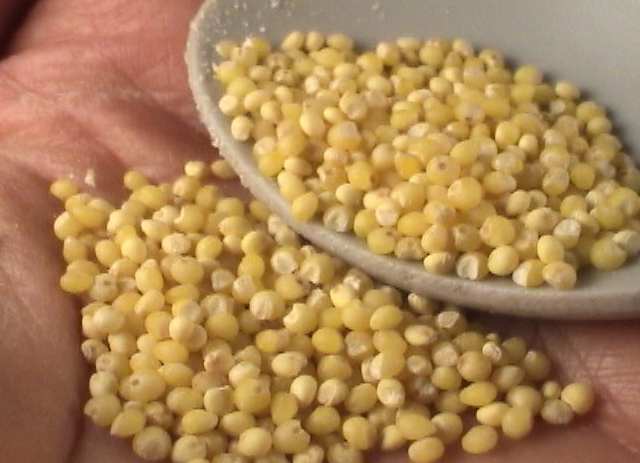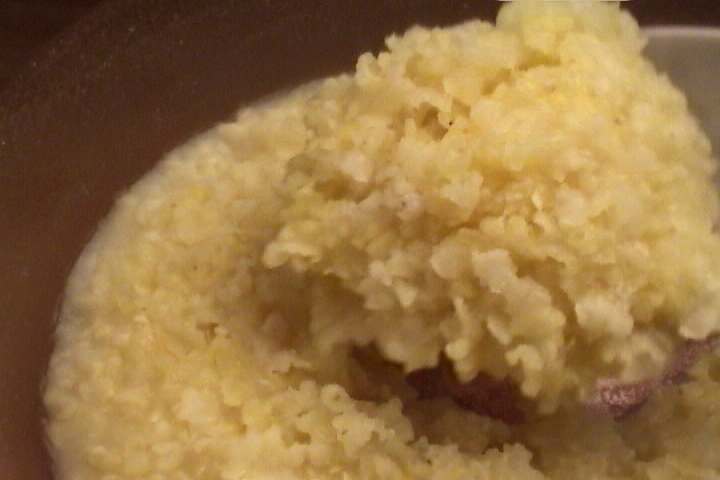1)
Millet corn casseroles
The photo below shows some millet seeds. Millet is similar to rice
in that it takes a few hours to cook. However, unlike rice, which retains
its shape, the millet seeds swell and burst, creating a paste, but the
paste is not sticky. It has a very
nice consistency.
Since the millet seeds burst during cooking, you could crush the millet
seeds in a coffee grinder, creating a powder which will cook at a slightly
faster rate. The end result is virtually the same.

I put some millet seeds in a glass bowl with some water, and
then put the cover on the bowl, and let it sit in very hot water -between
80°C to 92°C (180°F to 200°F) - for a few hours. The result is below. All of the
seeds have burst open, and the consistency is soft and delicate.
 Millet has a faint flavor, so when I eat it plain, I add only
a small amount of salt and mild olive oil. However, it is also good with
butter, cheese, meat, spices, and certain vegetables.
Millet has a very faint flavor, but it reminds me of corn, and I love
the taste of corn, so that might be why I also love the combination of
millet and corn. I added some water to the millet in the above photo, and
I added some white and yellow corn kernels, and then put the container
back into the pan of hot water for a while.
The result is below. We could describe this as a millet
corn casserole. Unlike wheat, oats, and most other grains, millet
doesn't have a sticky texture, so though the casserole looks solid, it
actually has a very soft, pleasant texture. This casserole is delicious
with a little butter and/or olive oil, and some salt. Is also good with
various sauces, pieces of meat, and spices.
|
|